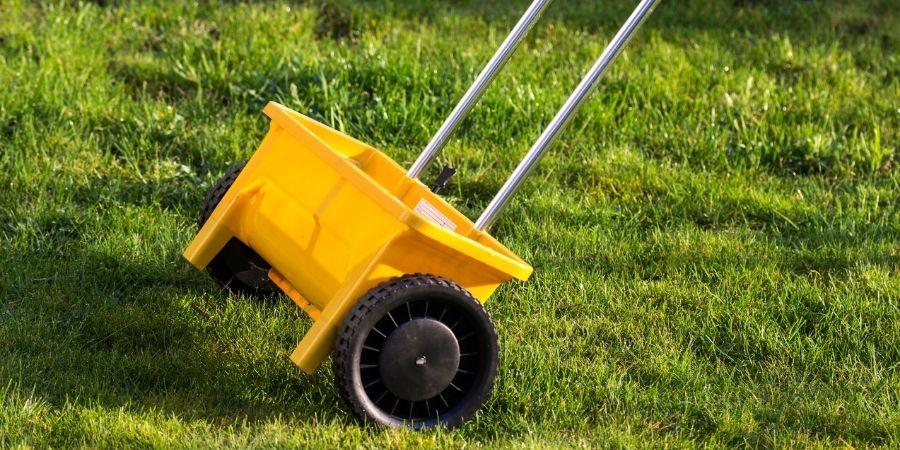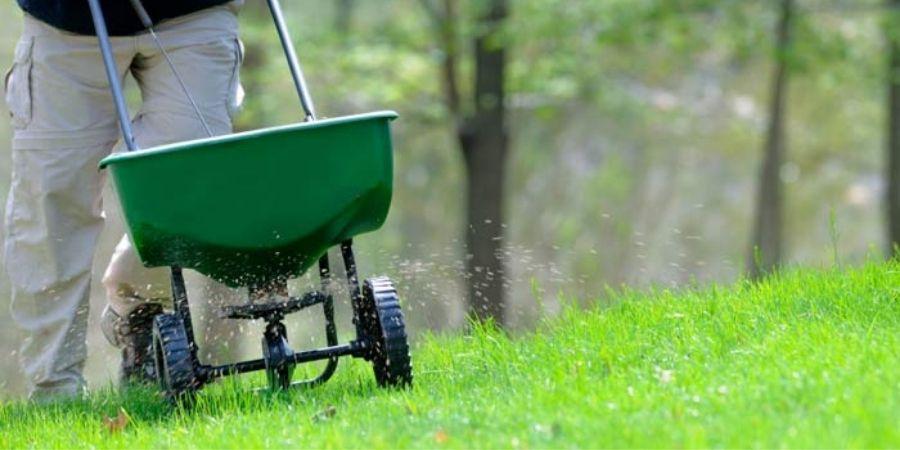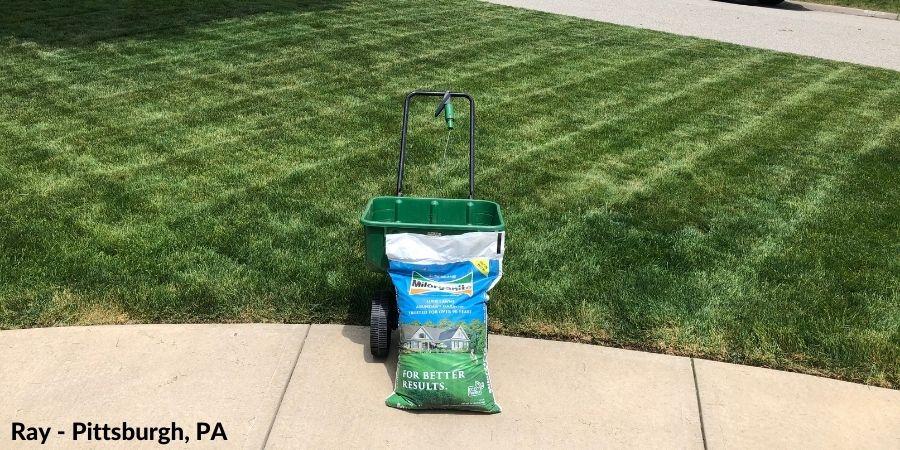By Jaime Staufenbeil – Milorganite Agronomist – April 30, 2022
Do you want a lush, green lawn? Choosing the right lawn spreader is key to achieving that. In this article, we will explore the two main types of lawn spreaders: drop spreaders and broadcast spreaders. We will discuss their features, benefits, drawbacks, and how to calibrate them for optimal results.
What’s a Drop Lawn Spreader?
Drop spreaders are known for their accuracy in distributing fertilizer and grass seed evenly. They deposit the product precisely where you want it, ensuring complete coverage of your lawn. When using a drop spreader, it’s important to overlap the wheel marks to guarantee uniform distribution. The speed at which you walk affects the amount of product dispensed.
Why Use a Drop Lawn Spreader?
Drop spreaders are perfect for smaller lawns under 5,000 sq. ft. They are easy to operate and provide precise, controlled coverage. Maneuvering around obstacles and tight spots is a breeze with a drop spreader. Additionally, the wind has minimal impact on the distribution of the product. You’ll also find that less product ends up on driveways, walks, and paths.
Despite their accuracy, drop spreaders have a drawback. They cover a smaller area per pass compared to broadcast spreaders. Thus, it may take more time to fertilize your entire lawn.
What’s a Broadcast Lawn Spreader?
Broadcast spreaders distribute fertilizer and grass seed in a fan-like pattern, covering a larger area per pass than drop spreaders. The speed at which you walk and the size of the spreader’s holes determine the amount of product dispensed. It’s essential to overlap passes to avoid creating visible stripes on your lawn.
Why Use a Broadcast Lawn Spreader?
Broadcast spreaders are ideal for larger lawns as they cover more ground in less time. You can choose from walk-behind or handheld models, depending on your preference. Walk-behind spreaders typically have larger hopper capacities than drop spreaders, reducing the need for frequent refills.
Some broadcast spreaders include a side-shield feature that allows you to control the spread, making it easier to apply products around the perimeter of your lawn without affecting hard surfaces or landscaping.
However, one drawback of using a broadcast spreader is the potential for product distribution in unwanted areas such as gardens or driveways. This can be problematic when applying herbicides, as they may harm your flower beds. Luckily, Milorganite can be safely used on lawns, flowers, shrubs, and vegetables. Remember to clean up any product from hard surfaces to prevent contamination of waterways.
In conclusion, both drop spreaders and broadcast spreaders have their advantages and drawbacks. Consider the size of your lawn and the level of precision you require before making a decision. Whichever lawn spreader you choose, be sure to follow the calibration instructions provided by the manufacturer for optimal results. With the right spreader and proper calibration, you’ll be on your way to a healthier, greener lawn in no time.



